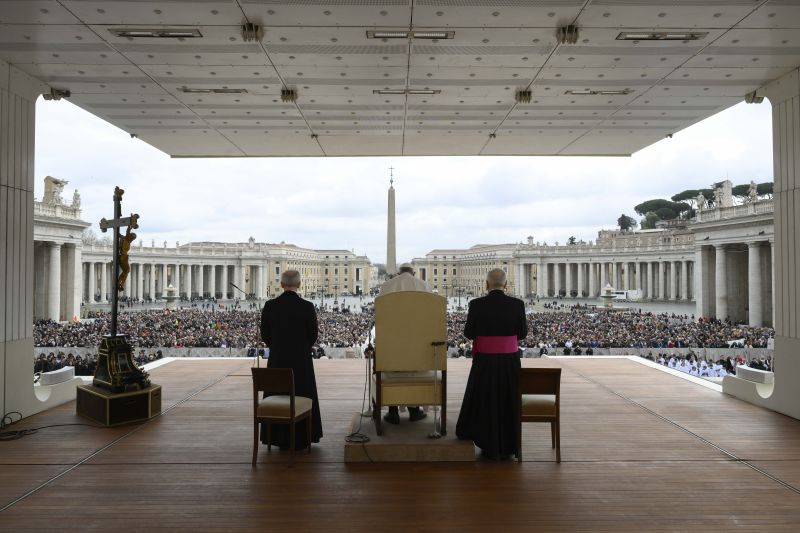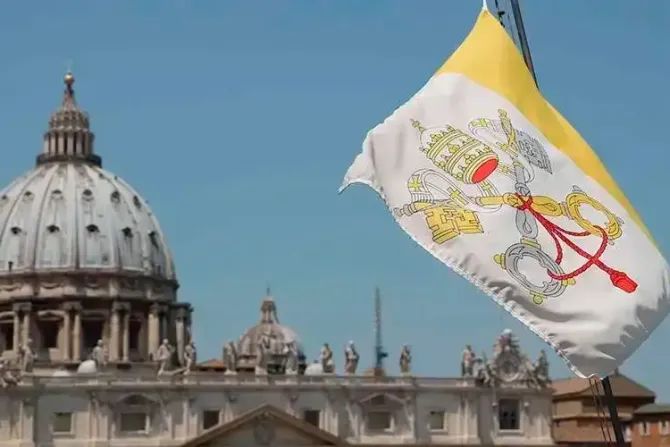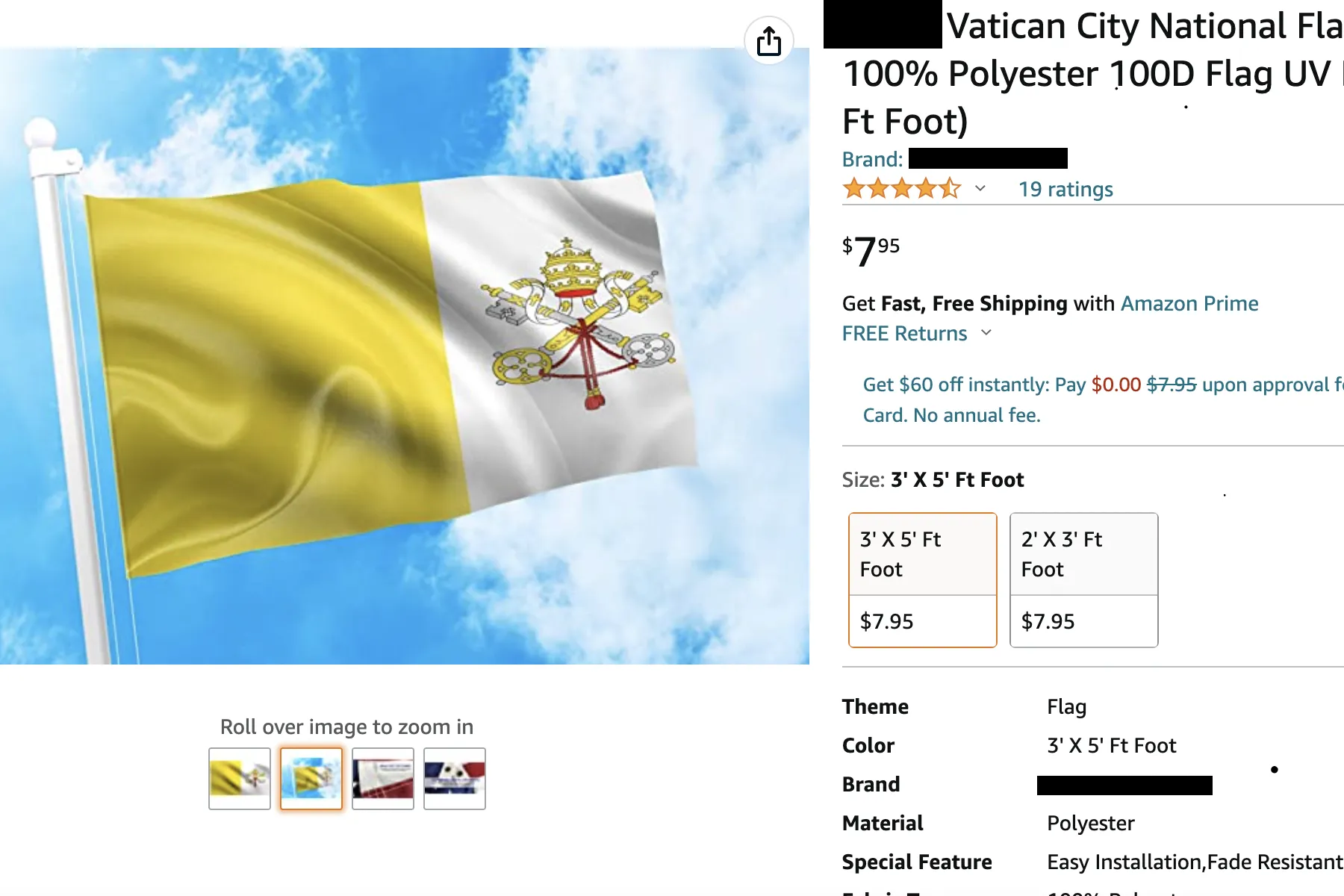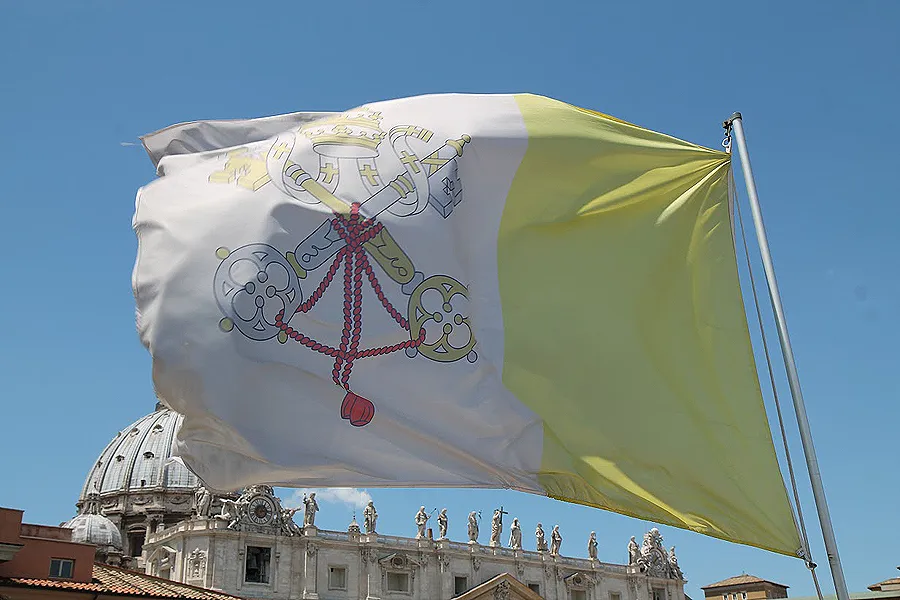 Pope Francis speaks in St. Peter’s Square on March 8, 2023. / Vatican Media
Pope Francis speaks in St. Peter’s Square on March 8, 2023. / Vatican Media
Rome Newsroom, May 18, 2023 / 09:10 am (CNA).
Is the new Fundamental Law issued by Pope Francis last week simply a modernization of Vatican City’s civil constitution or something much more — perhaps even a Copernican revolution in how the city-state functions and understands itself?
Pope Francis said he issued the new law “to respond to the needs of our times.” And Professor Vincenzo Buonomo, a councilor of the Vatican City State and rector of the Lateran University, stressed this week that this reform, the first in 23 years, merely aims at emphasizing and valuing some of the aspects of the state, while at the same time giving it what he called a renewed “missionary push.”
Yet in some respects, Francis’ May 13 promulgation moves the state closer to the model of a modern, secular state.
To be sure, the new law leaves no doubt that the civil government remains very much an absolute monarchy, with the supreme pontiff possessing all “legislative, executive, and judicial powers.”
But the new law gives Vatican City’s civil entities a more central role, even in international relations, and it now emphatically makes the city-state the guarantor of the Holy See’s sovereignty.
Other notable changes include allowing for lay appointees to its legislative body, the Pontifical Commission for Vatican City State; restructuring the state councilors who advise the commission as a “college”; and modernizing and tightening fiscal oversight.
In addition, the role of the secretary of state is de-emphasized while the pope’s powers are centralized, as has been manifested in other reforms during Francis’ pontificate.
Guaranteeing independence
Francis’ new constitution is the third Fundamental Law since 1929, the year in which the Vatican City State was founded with the Lateran Treaty.
The treaty put an end to the so-called “Roman question.” After Rome and the Papal States had been annexed to the Kingdom of Italy in 1871, the problem arose of how to guarantee the independence of the Holy See, which was by then in Italian territory.
It was not just an Italian question because the material and moral independence of the pope and of the bodies through which he carries out his service to the universal Church is in the interest of all Catholics and all states.
From the birth of modern states, the Holy See had understood that the only guarantee of independence would be to manage its own state. And so, the solution to the Roman question involved the creation of a territory so small as to seem almost symbolic but with all the constituent elements of a state: territory, population, sovereignty, and legal system.
Today, the civil government provides security, public order, civil protection, health protection, health care, general hygiene, the environment and ecology, economic activities, postal, philatelic, customs services, connectivity and network infrastructures, construction activities, technical systems, plumbing, and electricity.
It also is responsible for the Vatican Museums’ conservation, enhancement, and use, as well as “superintendence over the assets of the entire artistic, historical, archaeological, and ethnographic heritage.”
After 1929 there were, over time, various adjustments to the state constitution, but it was only under John Paul II that a new Fundamental Law was promulgated, on Nov. 26, 2000.
In 1929, it was envisaged that the legislative power would be exercised directly by the pope, with the possibility of “delegating the legislative power for certain matters or individual objects to the governor of the state.”
The 2000 law instead established that the Pontifical Commission directly exercised legislative power, except for cases in which the pontiff reserved it for himself. The state remained an absolute monarchy, but John Paul II handed over the management of power and administration, making concrete the fact that the pope, despite being king, did not act like a king.
‘Functions,’ not ‘powers’
The Secretariat of State was mentioned four times in the law of 2000 and, in all cases, acted as an intermediary for presenting draft laws or the state budget to the pope.
However, with Pope Francis’ new Fundamental Law, the pope returns to the center of everything.
The Secretariat of State is mentioned only once — in Article 2, which underlines that “the representation of the Vatican City State in relations with States and with other subjects of international law, in diplomatic relations and for the conclusion of treaties, are reserved to the Supreme Pontiff who exercises them through the Secretariat of State.”
This article remains practically unchanged from the previous law, except that it sets forth a more decisive role of the civil administration, which “participates in the international institutions of which the Holy See is a member in the name and on behalf of the State” and which “maintains relations and subscribes, with bodies and foreign bodies, acts necessary to ensure supplies, connections, facilities, and public services.” In this way, the state takes on a more critical role.
But the centralization of the pope’s authority is highlighted in the new constitution by the fact that power is reserved to the pope while other entities are assigned only functions. For this reason, the new law does not refer to the “powers” of the Secretariat of State, the administration, and the Pontifical Commission. Instead, the various bodies have legislative, executive, and judicial functions.
The new law also confirms the legislative function of the Pontifical Commission, until now composed of a cardinal president and other cardinals appointed by the pope. But now there is this novelty: “other members” may also be designated in the commission, including lay men and women.
Yet another change is a requirement for more robust fiscal management.
Under the new law, a three-year financial plan approved by the commission is to be submitted “directly for the approval of the Supreme Pontiff” without going through the Vatican economic bodies or the Secretariat of State, as the old law required. In addition, the budget of the Vatican City State administration is to be “subjected to the control and auditing of a Board, made up of three members, appointed for a three-year term by the Pontifical Commission, to which it reports.”
How this new constitution will affect the Holy See is yet to be understood.
The Vatican City State remains, in the end, the pope’s domain. Nonetheless, the new law suggests that the city-state is no longer merely considered a support to the Holy See but an entity closer to the secular and modern states, as it has never been in the past. It might be a necessary and welcome update to the state’s structure, but could it also undermine the institution of the Holy See?
[…]







